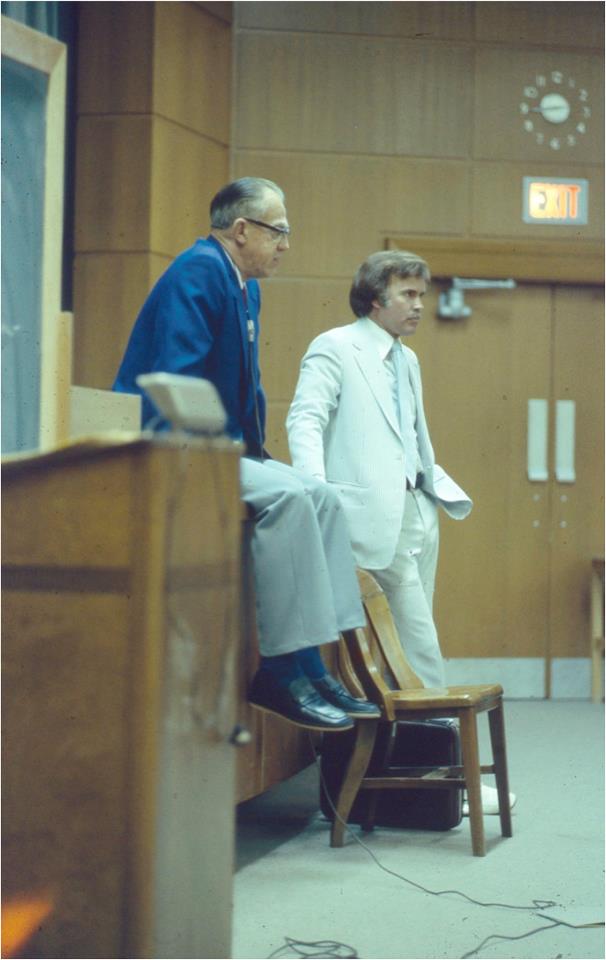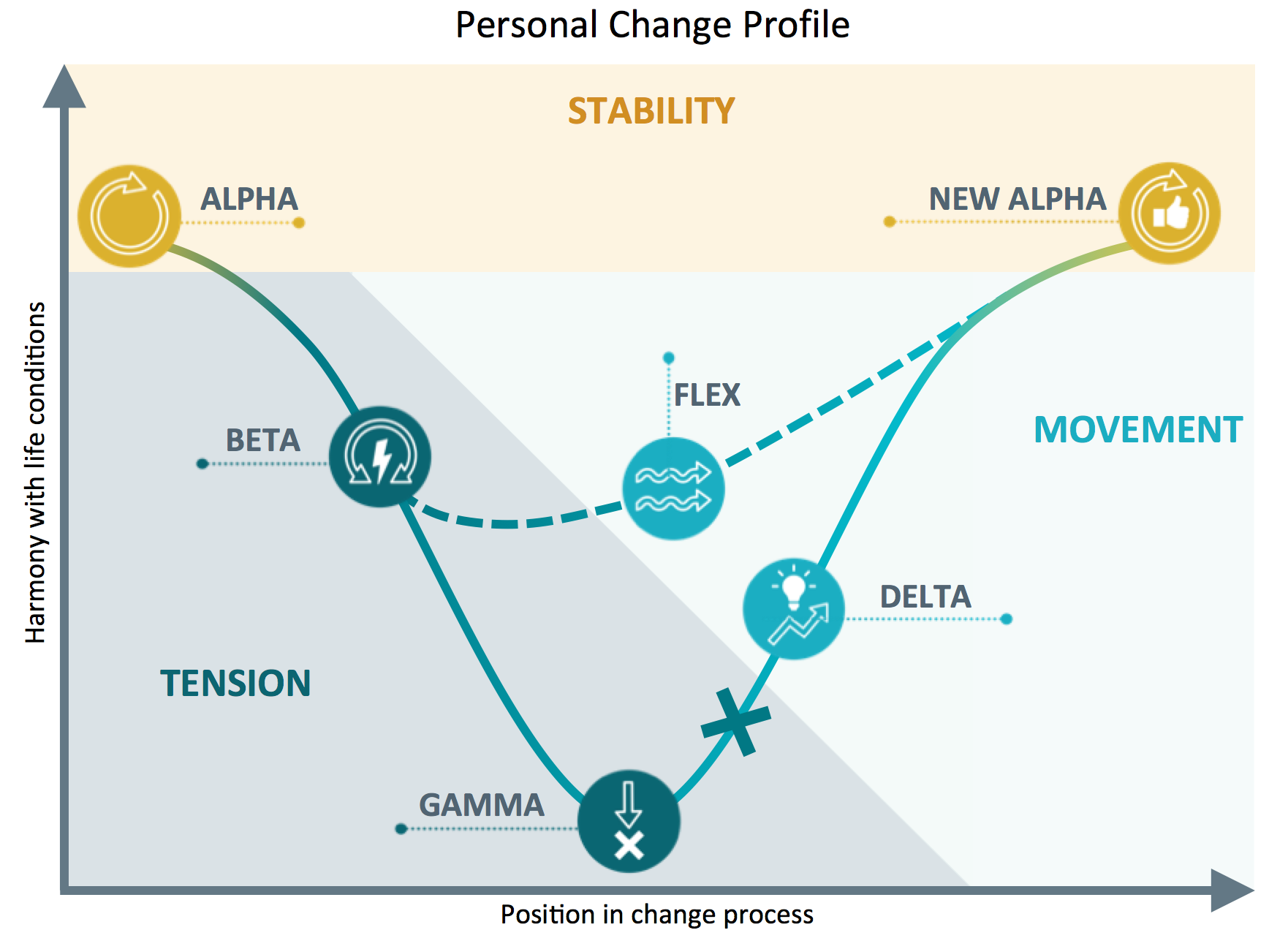Spiral Dynamics
All ValueMatch instruments are based on the Spiral Dynamics (Integral) philosophy developed by prof. Clare W. Graves and Dr. Don Beck. This is a model and language which describes the evolutionary development of people, organizations and society. It is a new way of mapping and understanding the interaction between people. It distinguishes different value systems (these are driving forces, world views and living rules) of people and cultures, see the adjacent diagram. In addition, an important part of Spiral Dynamics is a description of just how people and the environment change and what stages are passed through in making such a change.
Spiral Dynamics Integral can be equally applied at an individual, organizational, social and even geopolitical level. ValueMatch has done considerable work to define how the value systems are visible in organizations. Below you will find a detailed description of Spiral Dynamics and the value systems.
Detailed description of Spiral Dynamics
To understand the dynamics that occur between people, in teams and within organizations, we need to look beyond thoughts and behavior to discern the underlying motivation that is the cause of people’s thoughts and behavior. Every person is motivated, but not by the same things. A lot of the conflicts, misunderstandings and friction that arise in organizations originate in the expectation that other people have the same motivation and drives as ourselves. In most organizations this is not the case, however. And it isn’t necessary either, as people with very different motivations and drives can work together perfectly well, as long as there is a general agreement on the direction and a clear, shared goal.
Graves and Spiral Dynamics
 From the 1950s to the 80s, Dr. Clare W. Graves, professor of psychology at Union College in New York, conducted extensive research into people’s drives and into what makes people happy. He discovered that a person’s development can be seen as several clearly distinct stages. In each of these stages, which we term ‘value systems’, people have different motivations and drives. Each of these value systems emerges through interaction with specific home or work circumstances. Thus, people living in a tribal culture have a different dominant value system than people living in, say, a communist state. The value systems represent the way that the human psyche adapts in order to thrive in each given environment. As human beings developed further, the life environment and the associated value systems have become increasingly complex.
From the 1950s to the 80s, Dr. Clare W. Graves, professor of psychology at Union College in New York, conducted extensive research into people’s drives and into what makes people happy. He discovered that a person’s development can be seen as several clearly distinct stages. In each of these stages, which we term ‘value systems’, people have different motivations and drives. Each of these value systems emerges through interaction with specific home or work circumstances. Thus, people living in a tribal culture have a different dominant value system than people living in, say, a communist state. The value systems represent the way that the human psyche adapts in order to thrive in each given environment. As human beings developed further, the life environment and the associated value systems have become increasingly complex.
 Graves’s work was continued by Dr. Don Beck and Chris Cowan, who assigned a certain color to each value system and who designated the Spiral Dynamics model, as shown here. The first system, with the beige color code, is not so relevant to the analysis of organizations, and the eighth system, turquoise, has barely been developed and is also not relevant to ValueMatch instruments.
Graves’s work was continued by Dr. Don Beck and Chris Cowan, who assigned a certain color to each value system and who designated the Spiral Dynamics model, as shown here. The first system, with the beige color code, is not so relevant to the analysis of organizations, and the eighth system, turquoise, has barely been developed and is also not relevant to ValueMatch instruments.
Graves’s work can be used to analyze both the interaction between a person and society, and between a person and his/her work environment. Each value system will flourish in a specific work environment; thus, someone strongly developed in a competitive mentality (a feature of the orange value system) will probably feel more at home in a commercially driven ‘orange’ organization than in a ‘green’ organization, which focuses more on people and harmony.
The dynamics
The successive value systems become increasingly complex. This applies both to the life conditions and to the psyche that needs to deal with these life conditions. This development is apparent in our steadily more complicated society, evolving from the original tribal culture to today’s global technological society. Similarly, for individuals, as we grow older we are confronted with increasingly more complicated circumstances that drive the development of our psychology. This complexity mainly pertains to social interaction, and has no bearing on one’s intelligence. A person with a strongly developed green drive is not more intelligent than a person with a strongly developed orange system. The value systems can also not be classified in terms of better or worse: each system fulfills its own function in the right environment. The system that develops within a person depends on numerous factors, such as background, personal preferences, the problems one encounters, but particularly on the environment in which you live.
Each new value system can only develop in people, teams and organizations if the preceding systems have been worked through and developed sufficiently. For example, for a team that is working on a complex project that requires a strategic, ‘orange’ way of thinking and acting, it must have sufficient structure and order within itself. These are aspects that were developed through the preceding blue system. If these did not develop, or did not develop sufficiently, then the orange system will drop through its blue foundation, so to speak, and the short-term mentality and chaos which are characteristic of the preceding red system will come to dominate.
It is important to realize that a value system describes how people think about things, and not what they think. It describes, for instance, why religion becomes important to someone at a certain point in time, but not which religion or creed the person adheres to. Value systems do not say anything about personal tastes but about the stages of development that we go through, just like everyone else, which are expressed in our drives, in our view of the world, and how we arrive at choices. What drives us can vary between the different areas of our life, such as family or work, and can change quickly when life circumstances suddenly change, for example when someone loses his job and can no longer pay off the mortgage, and therefore feels under pressure.
Value systems should therefore not be seen as static: different parts of our life or changing circumstances can sometimes trigger very different value systems in us. Thus, the sickness of a family member can bring out the purple system in us, while a vigorous sports match can bring out the red system.
The eight value systems
Below we describe the eight value systems.
 Beige
Beige
The first system is beige. This is actually the first form of human existence, of an instinctive nature and geared to survival. Time is only a matter of the here and now, and the focus is on satisfying physical needs.
This system is manifest in for example infant children and drug addicts, and also becomes manifest in life-threatening situations such as a natural disaster. The only drive is to survive. The beige system is not measured by the ValueMatch questionnaire, as this system has only limited relevance for people nowadays.
 Purple
Purple
In periods in which the human race had to deal with strenuous circumstances (such as hunger, cold, hazards and threats), people found safety in numbers, and thus learned to cooperate. People started living as tribes and developed the power of speech and social interaction forms.
This heralded the second, purple system, which gave a strong impetus to mankind’s capacity for associative thought. Objects and natural phenomena gained significance in the form of spirits. The tribe provided for safety and shelter, and the individual was faithful to the customs of the tribe. The awareness of time became cyclical, and people lived according to the rhythm of nature and the seasons.
Today, this system is clearly visible in family ties and in children’s development, when fairy tales, rituals and cuddly toys become important. In organizations, purple is manifest in unwritten rules and bonding rituals such as after-work drinks, outings and birthday cakes. In times of crisis this system becomes more active, as people start to seek the safety of a group.
 Red
Red
Within the safety and the shelter offered by the purple group, the I-awareness or individuality is born (comparable to a child’s ”terrible twos” in which “no” and ‘I’ and ‘me’ first gain significance). This ‘I’ becomes aware of his own drives and of the ability to impose his will on others. This forms the basis of the red system. The underlying theme here is, ‘Stand up for your own interests, satisfy your own desires by doing what you want to do, regardless of others’. The red system releases strong I-powers such as the lust for life and an unrestrained desire for power and possession. It can represent both healthy empowerment and unhealthy power. While purple people huddle together in case of danger, the red individual meets the danger head-on, with courage and resolve. When tribes battle each other for territory, the red leaders are victorious. Red feels no guilt, but cares for respect and honor, which it will protect at all costs.
In today’s world, red is manifest in children’s drive to assert themselves and to bully others, in physical contact sports such as rugby, but also in street gangs and hooliganism. With respect to management, a healthy red translates into decisive action, but if uncontrolled it can convert into the abuse of power, causing insecurity among personnel.
 Blue
Blue
The red system ultimately leads to chaos, as well as to a widening gap between rich and poor, between the rulers and the ruled. This generates in response a need for calm, for order and stability, and so we see the blue system develop. Whereas red sought immediate satisfaction at the expense of everyone and everything, people now realize that the community is served by the ability to control those desires. People’s lives gain meaning within the context of their own group, in which the members adhere to similar values and standards. The here and now is no longer paramount; instead there is a life in service of one God, one truth, one right way. People are willing to follow the rules and to comply with an overarching plan, for which they will be rewarded in the future.
In today’s society, Blue is of course clearly apparent in the various church denominations, but it also forms the basic drives of ‘ideologies’ such as atheist communism. The blue system has brought much structure to our society, such as the state with its extensive system of laws and regulations, the justice system, property rights, infrastructure, and so on.
Organizations cannot survive without the structure provided by blue, but in an unhealthy form it brings too much bureaucracy, making the organization rigid and unable to adapt to changing circumstances. Blue can furthermore breed a dogmatic right-or-wrong mentality, and an unforgiveable sense of guilt if one fails to obey the rules.
 Orange
Orange
The blue group pressure represses individual freedom, expression and innovation. In response, an awareness awakens that each individual should also be able to determine his or her own life, and be entitled to personal success. The resulting orange system is strongly oriented toward individual freedom of thought and autonomy. Like red, orange is attached to self-expression, but in a more strategic manner. Orange comprises blue and for that reason, in a healthy form, will want to operate within the existing structures as much as possible – although it will enjoy the challenge to identify the loopholes and exploit these. Where red dominates by exercising power, orange plays the game strategically for the thrill of winning, and so it has an interest in the willingness of other players to continue playing the game as well.
The western world’s economy has a strong orange character: ambitious, geared to growth, innovation and individual success. Many trainings on the theme of personal leadership and effectiveness seek to activate this drive.
In organizations, orange delivers financial success, and strategic and goal-directed operation, but if it goes too far it can repress the blue order and hence lead to the collapse of the organization.
 Green
Green
Orange brings abundance, but the ‘rat race’ also generates a sense of emptiness and loneliness. Many people nowadays are familiar with the experience of having everything they want and need such as a nice job, their own house, a family, but of being plagued nevertheless by the question if this is all there is? The green system arises out of a need for a sense of meaning, with a focus on people’s wellbeing and a sense of inner peace. It seeks a life in harmony with people and nature. Green is attentive to feelings and emotions, and reintroduces intuition and spirituality into the mechanical, material orange world. Since green only emerges once people have become so affluent that they needn’t spend all their time on working and achieving success, this system only emerges fully in prosperous societies, and only peripherally in less developed areas of the world.
This system has grown strongly in the Northern European countries, Canada and New Zeeland over the past decades, particularly with the advent of the welfare state in the 1960s with its emphasis on social care and wellbeing, and on the emancipation of minorities. Green repairs many of the important elements lost or damaged in earlier parts of the spiral, such as the equality of man and woman, the balance between work and private life and the equilibrium between mankind and nature, and it reintroduces a spiritual awareness.
In respect of management, green is visible in the care for personnel and their personal development, the need for a horizontal organization with self-directing teams, but also in the urge to involve everyone in interminable discussion rounds, without achieving any substantial results.
Green reintroduces important elements in the spiral, but it also has a lot of trouble dealing with the problems generated and encountered by contemporary society. One of the main pitfalls for green is its neglect of hierarchy in people’s development, and hence of the qualities of earlier value systems. Green counters the right-or-wrong mentality of blue, but in doing so it undermines rules and structure. It fights against the distinction between winners and losers and the lack of human dignity in orange, but in doing so undermines the system that created the wealth which made it possible in the first place to start devoting attention to the human and humane sides of life.
Green has trouble dealing with the unhealthy expressions of red because it is unwilling to impose limits on undesirable behavior, which is instead freely tolerated. These are exactly the aspects that many individuals and organizations and society as a whole are struggling with. Thus, we see that many organizations feel a need for decisive action (red) as well as for a proper structure (blue), and for a goal-driven performance (orange) as well as for caring for people (green). To combine all these aspects requires a more complex level of thinking, which is indeed what we see emerging today.
 Yellow
Yellow
As part of his research, Clare Graves discovered that people can, at a certain point in their development, take a huge step, with a loss of fear of failure and a huge increase in creativity, enabling them to solve much more complex problems. This is termed the yellow system, in which people are no longer driven by external forces such as social pressure, but from within, autonomously. As this is a relatively unfamiliar system, we shall describe yellow more extensively.
In yellow, a person recognizes all underlying value systems in himself and in others, and is able to bring these systems into alignment. Yellow responds to threats, such as the growing climate problem, not with fear but with the question what solution would serve the entire system. Yellow sees life as a kaleidoscope of opportunities in which each person seeks his or her unique destiny, by aligning oneself with the natural flow that drives our development. From this dynamic system it is also easier for people to see that others are driven by their own value system, so that they no longer attempt to convince others of their own viewpoint (value system). Yellow can cope with chaos and tumultuous change, and can trust that time itself can take care of things (think of concepts like synchronicity and serendipity). Nobody but me is responsible for who I am.
Examples of a yellow approach can be found in the work of Peter Senge, and in systems that emerge from apparent chaos such as Wikipedia and Open Source software development. In the some countries where green has developed strongly such as The Netherlands, this yellow system is emerging in response to the increasing complexity of society and the failure of orange and green to find satisfactory solutions for matters such as conflicting values between population groups, the spiraling costs of our healthcare system, and climate change. Yellow is capable of carrying out complex projects involving many different interest groups, without a central coordinating figure.
With regard to management, yellow is revealed in outlines of long-term perspectives in which the interests of the organization and of society coincide (circular economy), in operating within autonomous networks, and in the ability to adapt the management style to the situation. Yellow does not think outside the box but lives outside the box, from where it creates organizations that serve all stakeholders, and society, and the development that the world is currently undergoing. One example is Moyee Coffee, which went beyond Fair Trade in which we gave farmers a better price for their coffee, to Fair Chain, in which Africans directly take control of the chain of coffee production and thereby become independent of western development aid and multinationals.
Of course yellow comes with its own distortions, but as this is still a budding value system, not much can be said about this at present. Aspects of its distortion are that it imagines matters to be more complex than they actually are, that is it impatient with incompetence, and can be somewhat hard to follow.
 Turquoise
Turquoise
It is inevitable that the emergence of a system oriented on self-expression or on ‘I’ (such as beige, red, orange or yellow) is followed by a system oriented on WE, with aspects of bringing parties and interests together and of self-sacrifice (such as purple, blue and green). Hence, besides the emergence of yellow, in parts of the world we are also witnessing the emergence of the next system, namely turquoise. This system has a holistic worldview, with people experiencing their life as being one with the earth and the universe and all that exists. Turquoise sees the world as a single dynamic organism with a collective consciousness. The self is both autonomous and blends seamlessly into the whole. This system is starting to develop more vigorously, as manifested in an increasing interest in the integration of science and spirituality.
Although many claim to be turquoise, we rarely see any real expression of this in society. But we do see it in models such as the Zero Point Field described by Lynn McTaggert, the cosmic consciousness described in the work of Brian Swimme, or the theories by David Bohm and Rupert Sheldrake.
This value system may well generate the awareness and the coherence required to truly tackle the growing global climate crisis. The ValueMatch profiles ignore this system because it doesn’t yet play a role in our present-day organizations and society, and practical experience shows that it is currently difficult to measure with questionnaires. As you may have noticed, self-expression systems alternate with self-sacrifice systems. This is the recurrent pendulum movement between yin and yang, or the masculine and feminine poles of life. Some people develop more along the vector of self-expression, with comparatively little development in self-sacrifice systems, and for others it is vice versa.
Our society and organizations harbor many different value systems, and people perform best when they are in an environment that suits their dominant value system. ValueMatch tools reveal which people flourish in what type of environment. Although we have described later-developed systems as being more complex than earlier systems, this does not mean that they are better or that people that have developed these are more intelligent. The goal of ValueMatch is to help people flourish, which occurs in situations where their life and/or work circumstances accord with their dominant value system.
Dynamics of change
The change profile reveals to what extent your current work and home environment suit you, whether you experience any tension and if so, how much, and the measure of change that is occurring in your life and how you experience that change.
 A change process generally proceeds as visualized in the illustration below. The vertical axis represents the degree of harmony with your life environment, with a lot of harmony at the top and a lack of harmony at the bottom. The horizontal axis indicates your position in the change process. It is important to realize that change processes often do not proceed in a linear fashion, and that you can move forward as well as backward along the lines. This also makes it difficult to predict the future course.
A change process generally proceeds as visualized in the illustration below. The vertical axis represents the degree of harmony with your life environment, with a lot of harmony at the top and a lack of harmony at the bottom. The horizontal axis indicates your position in the change process. It is important to realize that change processes often do not proceed in a linear fashion, and that you can move forward as well as backward along the lines. This also makes it difficult to predict the future course.
Stability (the yellow-colored field) shows the degree to which your work and home environment suit you. A high Alpha score indicates that you experience a lot of harmony with your work and home environment.
Changes within yourself or in your environment initially give rise to tension (the grey field), which is revealed by a higher Beta score. This sometimes concerns minor matters that can be resolved fairly quickly, to then see harmony restored again. For example, your current work conditions may not suit you, but you are soon assigned other tasks within your department that are better suited to you and you go back to stability in alpha.
If the tension cannot be reduced through small changes, then this suggests that there are larger changes at stake. Such change can either be initiated by an internal shift, which may relate to a shift in value systems, or by external shifts in our life conditions such as changes in the organization we work in or dynamics within our relationship. We usually tend to shy away from such changes, as it often implies having to take leave (to some extent) from our familiar environment, but also because solutions are generally not yet visible at this stage or because our new view on the world still has to develop further. As a result, we experience a barrier, which causes the tension to rise further (revealed by higher scores for both Beta and Gamma). The tension may rise to such an extent that we can no longer ignore the change and solutions present themselves, and at a certain point we overcome the barrier and allow the change to proceed (Delta). Things then start moving (represented by the green field) and the change takes shape in your life. This could be a new job, a change in home environment, or an important change in your personal relationship(s). As soon as the change has become integrated in your life, you will again experience harmony with your work or home environment. This is reflected in a higher New Alpha score, indicating a greater stability in your life.
To the extent that it is easier for us to release the old situation, for example because our emotional attachment to the situation is less or because we can already see clearly how the change will take shape, the change process can also proceed via the alternative Flex route. Flex represents turbulent changes to which you can give in more easily. That is why there is no barrier to this pathway.
The biggest changes in our life often involve a transition between value systems. Since we simply lack the vision to see where we will end up, this process is often shrouded in darkness. In that situation, the transition means that we will start seeing not just our life but even our own identity from, quite literally, another viewpoint, so that we will inevitably have to go through a period of not-knowing. This feels as if the ground beneath our feet is swept away, which arouses a strong emotional resistance. That is why this category of change almost always entails an experience of hopelessness, anger, frustration and even despair (a high Gamma score).